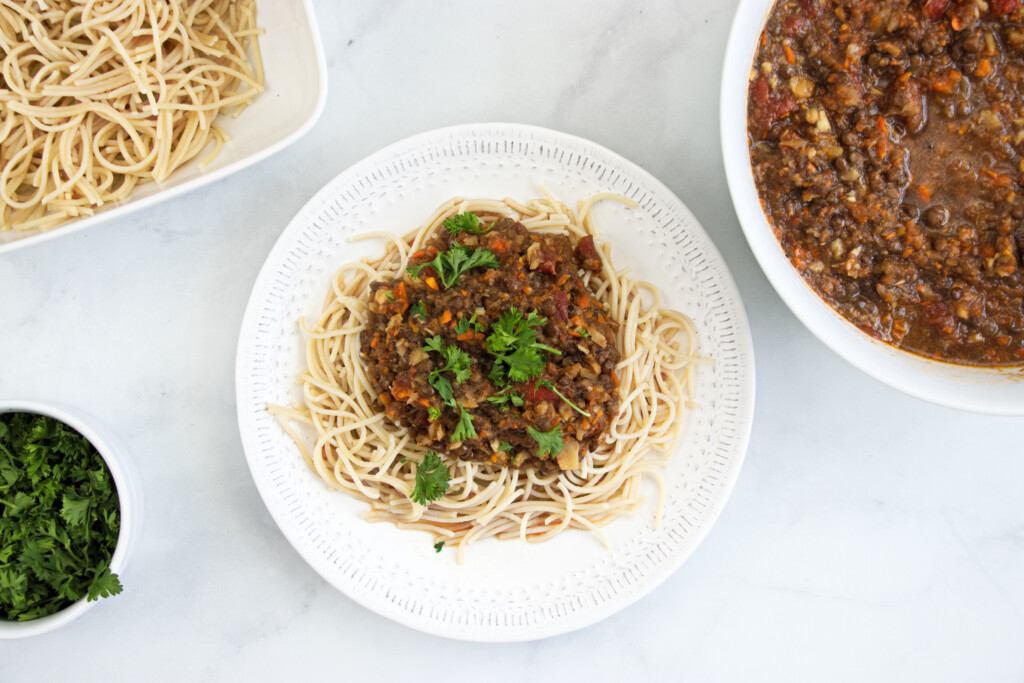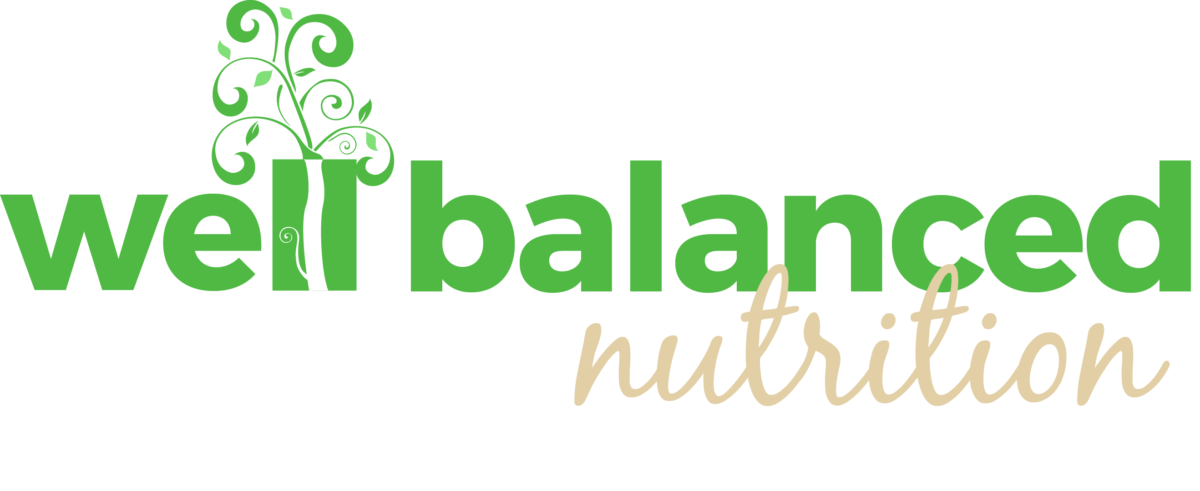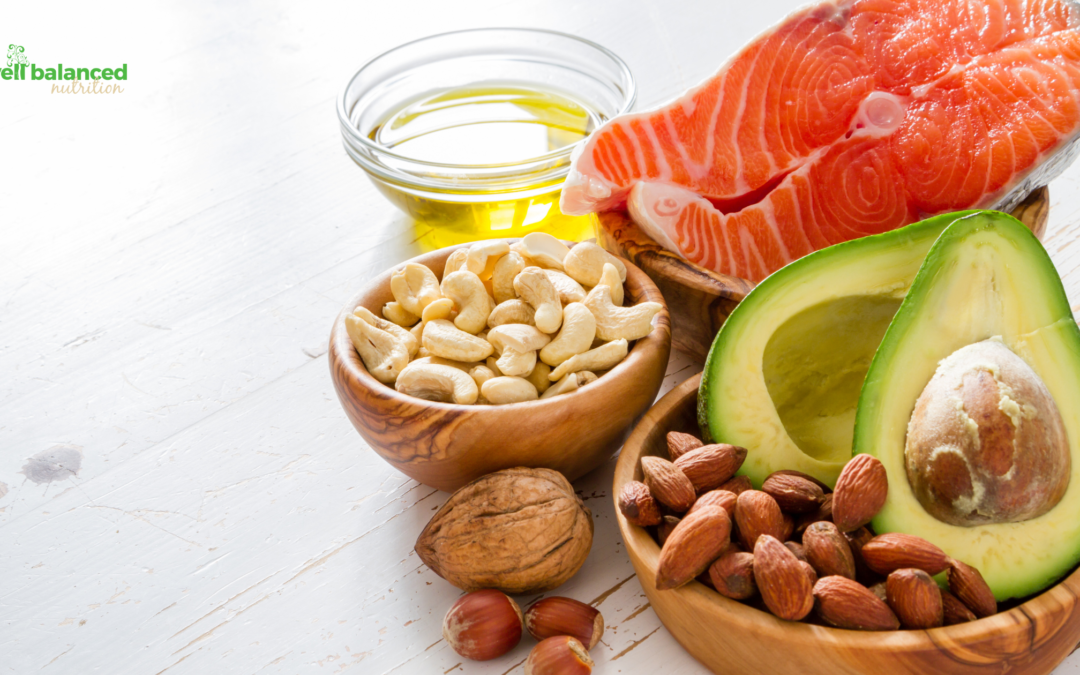Have you ever heard a dietitian say “All Foods Fit” and thought, yeah, right? I get it. It sounds too good to be true, like somehow we’re supposed to eat cake, mac and cheese, and Oreos yet still call it a “healthy diet.”
Your skepticism is understandable. Let me explain. “All foods fit” is a response to the all-or-nothing diet culture message that we have to restrict or eliminate certain foods. It doesn’t mean throwing balance and healthy foods out the window. Instead, it’s about having some flexibility and making room for the foods that bring us joy, including our favorite comfort foods. That warm soup on a chilly day, a slice of grandma’s pumpkin pie at Thanksgiving, or even a chocolate treat after a long week. Experiencing joy and comfort from food is something everyone deserves, and it doesn’t have to come with guilt.
If you’ve spent years dieting, it’s easy to start thinking of healthy foods and comfort foods as complete opposites — like one is “good” and the other is “bad.” Over time, this mindset can make eating feel stressful or overly restrictive. At Well Balanced Nutrition, we challenge you to bring them together or at least allow them to coexist on your plate. A handful of chips alongside a veggie-packed sandwich on whole wheat bread is a perfect example. Too often, we see people swinging between extremes, eating everything indulgent and “unhealthy” one day, then trying to eat “pure and perfect” the next. When comfort foods and nutritious foods can live side by side, eating becomes more satisfying, flexible, and sustainable.

What Is Comfort Food Really?
By definition, comfort food is “food prepared in a traditional style having a usually nostalgic or sentimental appeal.” But to me, it’s more than that. It’s food that feels like a hug.
Comfort foods can be the dishes we grew up with or simply the foods we crave after a long day. Think warm soup on a chilly evening, a grilled cheese when you’re feeling worn out, or ice cream on a summer night.
The good news is that you don’t have to give up the foods that make your soul smile to eat in a way that nourishes your body. For the comfort foods that show up regularly in your week — the meals and snacks you reach for most often — there are simple ways to make them a little more nourishing without losing their flavor or joy. Whether it’s swapping in whole grains, sneaking in extra veggies, or boosting protein and healthy fats, small tweaks can help your favorite dishes support both satisfaction and wellness. Let’s explore some strategies to keep comfort foods cozy, delicious, and a part of your balanced lifestyle.
How to Make Comfort Foods More Nourishing
Not all comfort foods need a makeover. Some traditions are meant to stay just the way they are, like Grandma’s pumpkin pie or your family’s special holiday casserole. Those foods are part of your story, and that alone makes them valuable.
For the comfort foods we eat more regularly, here are some simple ways to make them better for you.
Choose Recipes Made with Naturally Nourishing Ingredients
Some comfort foods are already packed with goodness. Take minestrone soup, for example. It’s warm, cozy, and full of fiber from beans and vegetables.
At Well Balanced Nutrition, our Ultimate Minestrone Soup uses low-sodium broth and whole grain pasta for an extra nutrition boost, perfect for gut and heart health.
Try this: Add an extra handful of spinach or swap white pasta for lentil pasta for more fiber and staying power.

Sneak in Veggies and Legumes
I love finding creative ways to boost the nutrition in familiar dishes. Our Sheet-Pan Bolognese replaces ground beef with lentils and adds colorful veggies, all the flavor with less saturated fat.
This trick works beautifully for classics like shepherd’s pie, too. Add mashed cauliflower or lentils into the mix for a hearty, nourishing spin.

Swap Flours and Sweeteners in Baking
Baking comfort foods can be both cozy and smart. Try using oats or whole wheat flour instead of all-purpose flour, and reduce added sugar when possible.
Our Pumpkin Muffins are a favorite, just one tablespoon of maple syrup, but full of pumpkin flavor, fiber, and that cozy fall aroma.
Whole grains add fiber and satisfaction, helping you stay full and energized without the sugar crash.

Reimagine Fried Favorites
Fried food can be comforting, but not every version has to be deep-fried. Our Fried Cauliflower Rice has all the flavor and crunch you crave, without the heavy oil. It’s rich in protein and fiber, and you can serve it over brown rice for a complete, satisfying meal.

Add Protein and Healthy Fats to Sweets
Dessert can absolutely be part of a balanced diet. Adding foods with protein, healthy fats, or fiber (like Greek yogurt, nuts, dates, or seeds) you boost satisfaction and support balanced blood sugar.
Our Peanut Butter Stuffed Dates with Coconut and Cacao are a great example: naturally sweet, with protein and healthy fats from the peanut butter and fiber from the dates and coconut.
Pro tip: Pairing a sweet treat with protein or fat can help slow digestion and keep cravings in check, making dessert both satisfying and nourishing.

The Bottom Line: You Can Have Your Cake and Eat It Too
There’s a common belief that comfort foods and health don’t mix, that you have to choose between feeling good and eating good. But here’s the truth: comfort food and health can absolutely coexist. It’s not about giving up the food you love; it’s about finding a balance that nourishes both your body and your soul.
If you’re tired of the all-or-nothing approach and ready to find your version of well balanced, we’d love to help.
Book a session with one of our dietitians to learn how to make comfort foods part of your sustainable, healthy lifestyle.



